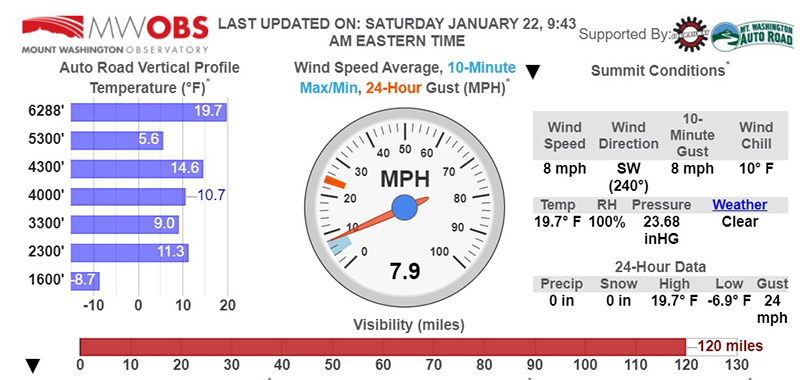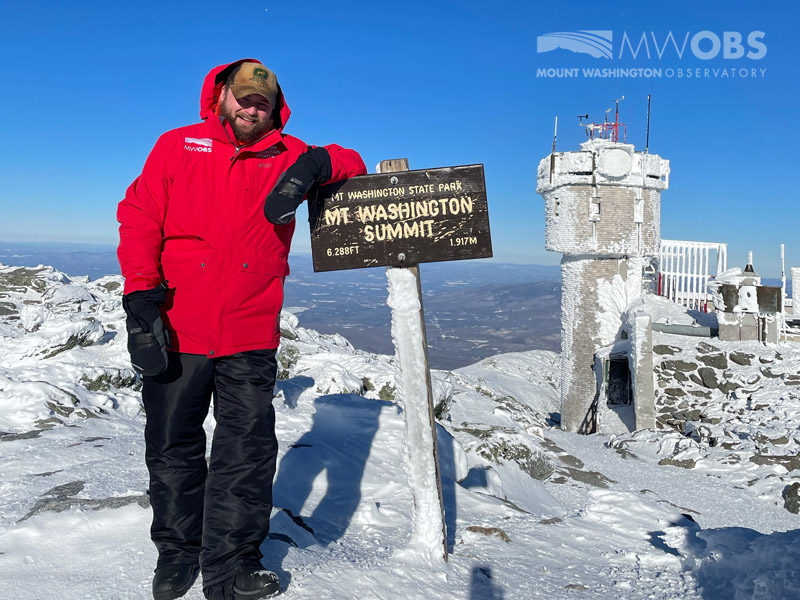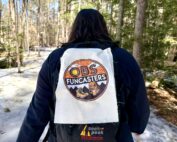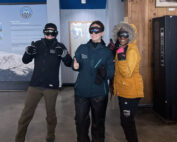A Highlight of My First Shift: Warmer Temps at Summit Caused by Inversion
2022-01-25 13:22:33.000 – Will Gabbert, Summit Intern
Have you ever wondered what it would be like to work and live atop Mount Washington? My longtime desire to answer this question has led me to become the observatory’s newest summit intern as of last Wednesday.
Upon my arrival on the “rockpile,” I was welcomed by an enthusiastic, smart, and wonderful team, along with the Observatory’s notorious cat, Nimbus. My first few days have been much more than I ever imagined. Top experiences so far include snapping photos of rime ice formations at the summit and on Tuckerman’s ravine trail, learning from the crew about history and daily life at the Obs, and experiencing what is known as temperature inversion last weekend.
We had to change gears halfway through the week-long shift as the observers on duty brought me up to speed on their forecast calling for the inversion. The conditions we experienced Friday night into Saturday morning, Jan. 21-22, caused the summit to be warmer than temperatures in the valley. This inversion actually began happening in the late afternoon to early evening before sunset on Friday and continued through Saturday’s sunrise.
Our Current Summit Conditions with Auto Road Vertical Profile, pictured above on Jan. 22 at 9:43 a.m. EST, show the inversion on Saturday morning as temperatures increased from 1600 to 6,288 feet in elevation. These temperatures are continuously collected and updated as part of our Mount Washington Regional Mesonet.
The observers predicted the inversion correctly while teaching me how to compile all the data and complete proper Mount Washington forecasts, which I have read countless times, like many of you who love adventure in the White Mountains’ higher summits.
Within the troposphere, where most of our weather takes place, temperatures usually get colder with a rise in elevation, just as you would expect during a hike to the summit. A reversal of this normal behavior happens during temperature inversions, also called thermal inversions. When skies are clear and winds are low, oftentimes under high pressure, daytime heating slows and stops as night falls. Air at the surface cools more quickly than it does aloft, especially in low-lying areas, like mountain valleys. As the warmer heated air from the daytime rises, cooler denser air remains and becomes trapped underneath the “cap” of warmer air aloft until the next morning when heating resumes or a new air mass mixes in.
In the case of last weekend, neighboring valleys had cold, light, northern air flowing down with ample snow cover and clear skies, which allowed for radiational cooling overnight. The buoyant warm layer of air aloft kept the denser, colder air near the surface until it began to warm through the morning with ample sunshine under the exiting high, as demonstrated above by our Current Summit Conditions with Auto Road Vertical Profile, showing the range of temperatures on Jan. 22 at 9:43 a.m. EST.
I took full advantage of the resulting prime conditions at the summit, enjoying a walk outside and talking with some hikers who remarked how much warmer it was than when they started out that morning. The temperature difference from the valley to the summit was about 25 degrees Fahrenheit! This set up a perfect morning to take photos while visibility was on my side at about 120 miles.
During my weeks off the mountain, I live near the Belgrade Lakes region in Maine. I simply love anything that has to do with nature and extreme weather, and what better place to experience these things than on Mount Washington, in pursuit of a career in meteorology? As a volunteer firefighter/EMT who has also worked for the Forest Fire Service, I’m not your typical 9-5 guy. In my free time, I like to head up to Baxter State Park, or “upta camp” in Aroostook County, to go snowmobiling, boating, fishing, hunting, and hiking with my girlfriend Jill and our dogs Baxter and Cope.
It’s great to be here, and I can’t wait to come back for my next week-long shift at the summit weather station!
 Standing at the summit of Mount Washington during my first shift as a summit intern.
Standing at the summit of Mount Washington during my first shift as a summit intern.
Will Gabbert, Summit Intern

 Standing at the summit of Mount Washington during my first shift as a summit intern.
Standing at the summit of Mount Washington during my first shift as a summit intern. 



